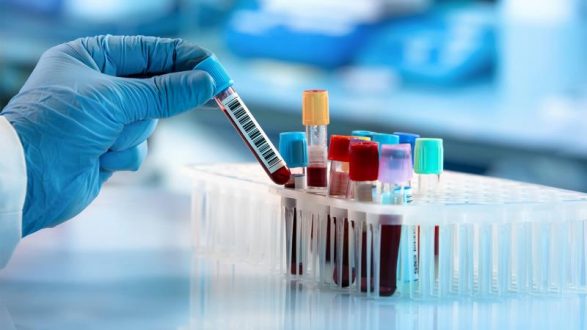An immune system test, called the Nitroblue Tetrazolium Test, is a blood test that looks at how well the immune system can turn the colorless NBT into a dark blue. Chronic granulomatous disease is diagnosed through this test. If someone has CGD, their white blood cells do not change color when subjected to the NBT.
Chronic granulomatous is a disease that runs within the family. It is a hereditary illness in which the white blood cells of the patient become weak and are unable to kill certain types of fungi and bacteria. Thus, this makes the patient prone to certain kinds of bacterial infections which are very harmful to health.
The immune cells of the patients with CGD do not work well and they become prone to certain infections. This test is recommended by a health care practitioner for persons who have chronic infections in their lungs, joints, skin, bones, and various body parts.
Nitroblue Tetrazolium Test Positive
The MPO (Myeloperoxidase) deficiency is a health condition in which the patient is infected by candida. This deficiency results in the development of bacterial infection that is harmful to health. The Nitroblue Tetrazolium Test in this case is positive.
The capability of the immune system to change the colorless nitroblue tetrazolium (NBT) to a bright blue is measured by the nitroblue tetrazolium test. The chronic granulomatous disease is also tested by NBT. This enables the doctor to diagnose the disease and start the treatment immediately.
Nitroblue Tetrazolium Test Negative
Chronic granulomatous disease is a condition that exists within the genes of certain families. In this disease, the patient suffers from a lack of NADPH oxidase. Due to this, the patient becomes prone to certain bacterial infections. The nitroblue tetrazolium test helps to detect the presence of CGD in a person. This test is negative in this condition, the white blood cell does not change the color.
Nitroblue Tetrazolium Test Interpretation
The medical professionals can interpret from this Nitroblue Tetrazolium test if certain cells of the immune system can convert nitroblue tetrazolium (NBT), a colorless substance, into a deep blue color.
The capability of the immune system to change the colorless nitroblue tetrazolium (NBT) to a bright blue is measured by the nitroblue tetrazolium test. The chronic granulomatous disease is also tested by NBT. This enables the doctor to diagnose the disease and start the treatment immediately.
The Nitroblue Tetrazolium test also interprets the deficiency of Myeloperoxidase (MPO). This disease deals with the deficiency of the Myelopersoxidase enzyme that is essential for creating HOCL from peroxide. Both CGD and MPO have similar clinical presentations. The Nitroblue Tetrazolium test is useful for differentiating between chronic granulomatous and MPO deficiency.
Nitroblue Tetrazolium Test Principle
The principle of the Nitroblue Tetrazolium Test is to assist in the differentiation of many types of infections, with NBT test values indicating an untreated bacterial, fungal, or parasitic illness. The test is also used to diagnose heterozygote carriers of CGD and as a screening test for the disease.
Nitroblue Tetrazolium Test Procedure
Small amounts of anticoagulated blood are needed for the nitro-blue tetrazolium test, 0.1 mL phosphate-buffered saline, 0.1 mL blood, and 0.2% nitro-blue tetrazolium in saline are combined. After combining these chemicals, a mixture is formed. This combination is intubated at 37 °C for 15 minutes and then allowed to cool at room temperature for 15 minutes.
The specimen is formed on a glass slide, preserved for 3 minutes with methanol, and then dyed for 3–5 minutes using Pappenheim’s dye. The huge black formazan deposits appear in the cytoplasm when the neutrophils consume this dye and experienced an oxidative burst.
In the lab, white blood cells are treated with the chemical NBT.
These cells are then examined under a microscope to check whether they have changed their color due to NBT. In the next step, the white blood cells are examined to check the results of the test. When NBT is introduced to the white blood cells, they normally turn blue. This indicates that the cells can fight bacteria while also protecting the person from infection.
The results of the test are considered negative when the white blood cells do not turn blue. This indicates that the cells are not able to fight bacteria and are infection-prone.
The results of the NBT are positive when the color of the white blood cells turned blue. The white blood cells in this condition change color and become blue when exposed to NBT. This also indicates the deficiency of Myeloperoxidase. These results are also used to diagnose the presence of different bacterial infections.
To distinguish between Myeloperoxidase deficiency and chronic granulomatous disease this test is mostly preferred by the doctors and is considered an efficient test for the diagnosis.
 Health & Care Information
Health & Care Information 


